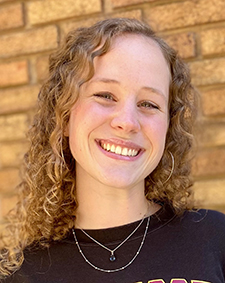Social well-being is essential to good health. Yet, as the COVID-19 pandemic roiled the country and upended social routines, supporting social well-being became even more challenging, including in rural areas. Social well-being was impacted most directly by the need to socially distance and isolate, and many people moved some or all their social activity online. However, this proved more challenging in rural areas, where broadband connectivity is less available and devices are less omnipresent, and for older adults, who generally report lower use of online technology than their younger counterparts.
In an April, 2022 report released by AP and NORC at the University of Chicago, rural adults age 50 and older reported the lowest level of satisfaction with available social activities in their community (only 38% thought the area they lived in was doing a good job at providing social activities, compared with 52% in urban areas and 55% in suburban areas, despite the fact that older adults make up a disproportionate share of rural residents). The survey also showed that rural residents reported lower satisfaction with transportation and availability of services to help them age in their own homes, compared with their urban and suburban counterparts.
Clearly, while rural older adults may have strong relationships and desire for social connection, there are barriers to good social health. That said, rural areas have long boasted a rich social tapestry, and as we stumble our way toward a new social normal more than two years into the pandemic, we must find ways to support community and connection.
We researched social opportunities in all 60 non-metropolitan counties in Minnesota, focusing most on those geared toward older adults. We found ample opportunities, but also variation between counties. Most – but not all – counties offer some combination of social infrastructure, including public libraries, senior centers, farmer’s markets, faith-based organizations (notably mostly Christian churches), American Legions and/or VFWs, and public parks. For some, there were community arts centers and hobby groups (e.g., quilting, fitness classes, bee keeping, cards, gardening, community theater, movie nights, bingo, photography, fishing, art classes, wine tasting, book clubs).
Some counties and communities made it easy to find opportunities online. For example, the Todd County website listed a variety of opportunities and social infrastructure resources in an accessible, user-friendly fashion. This is good for residents looking for new ways to connect with each other, but is also important for loved ones who live out of town and are trying to find opportunities for those they care about. Many counties also have local news sources through which activities and events can be shared, although the availability and independence of those has decreased nationally in recent years, potentially making it more difficult to share local social opportunities.

Some counties had more inclusive messaging than others. For example, Crow Wing County provides a list of LGBT-specific resources in its county resources guide, including one organization geared toward older adults. Chippewa County features a Restorative Justice program on its website, including volunteer mentoring opportunities for adults. Within Goodhue County, Red Wing has a webpage focused on racial equity, including a community strategic action plan.

Although our exploration of social infrastructure in rural Minnesota was limited to what’s advertised online, we found a wealth of opportunities for social connection. Not all rural communities have adequate capacity for website maintenance, though, and a lot of social activity happens in less formal ways. Not to mention, online advertising doesn’t work for people who can’t get online.
Rural older adults report lower satisfaction with social activities available to them, and the pandemic has highlighted the urgent need to strengthen social connection to improve health. Going forward, we need investment in social infrastructure – that is, accessible and inclusive places and opportunities for people to meet, gather, and socialize – to make sure that existing opportunities to connect are supported, expanded, and sustained.
Dr. Carrie Henning-Smith is an associate professor in the Division of Health Policy and Management, School of Public Health, 2021-2022 Fesler-Lampert chair in Aging Studies, and deputy director of the University of Minnesota Rural Health Research Center. Mary Anne Powell is a graduate research assistant and master’s in public health student at the University of Minnesota School of Public Health.

0 Commentaires